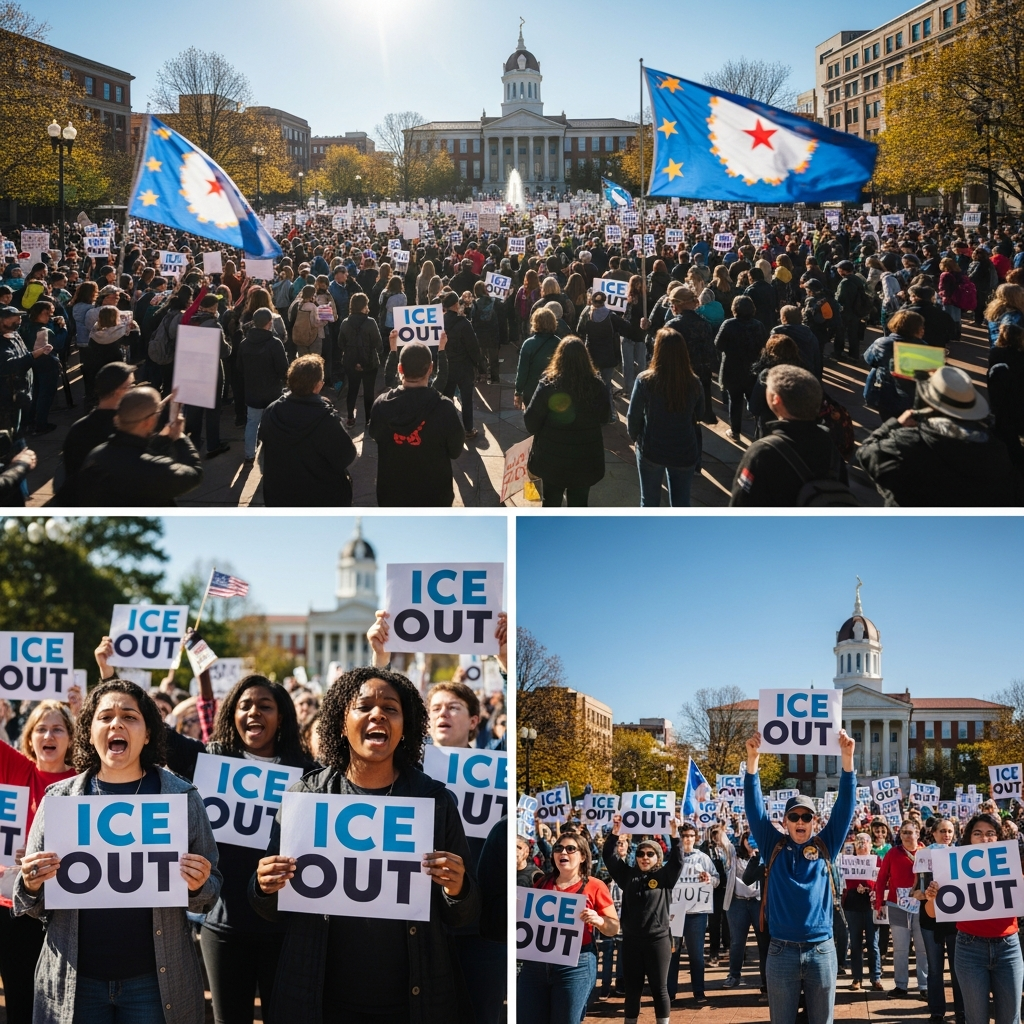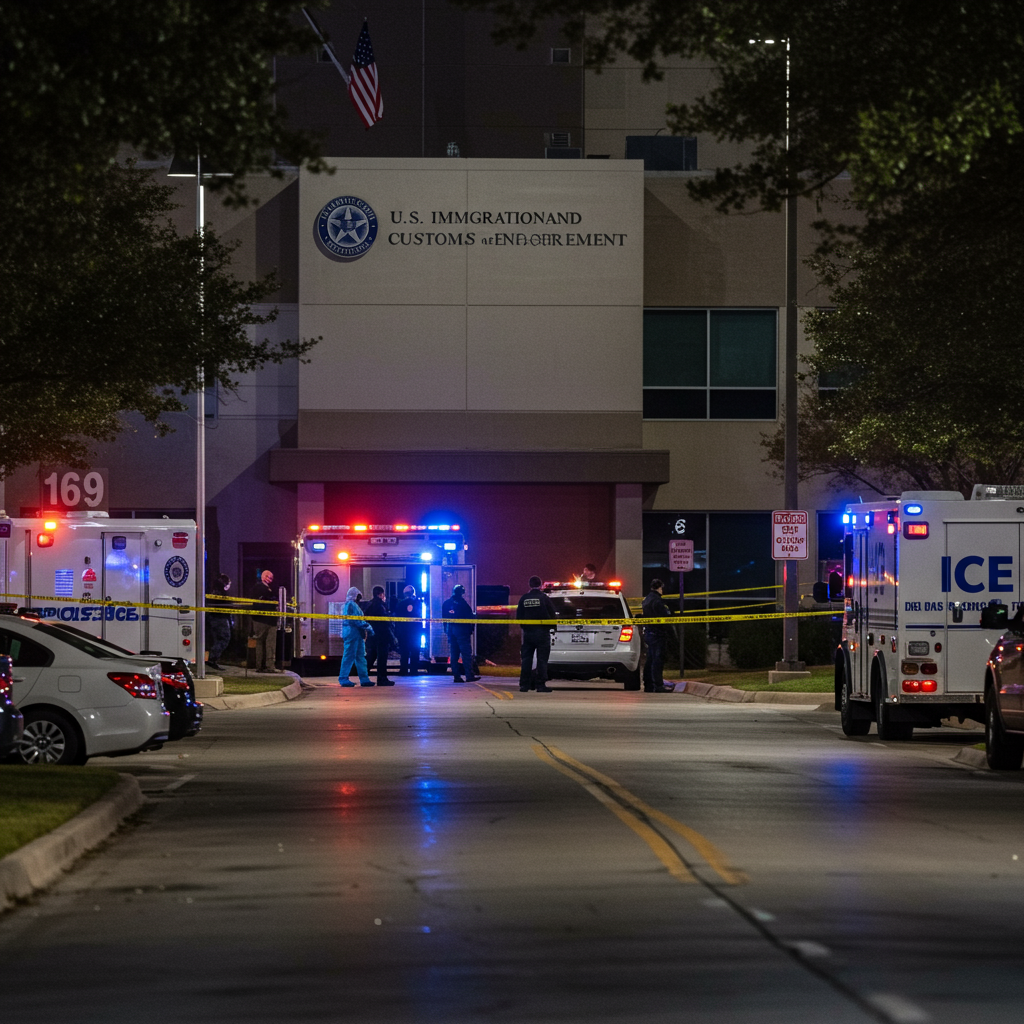Hundreds of North Carolinians recently gathered in Asheville’s Pack Square Park, voicing strong opposition to a federal immigration enforcement surge. This “ICE Out” demonstration directly confronted “Operation Charlotte’s Web,” a U.S. Customs and Border Protection (CBP) initiative launched in Charlotte. The operation, characterized by federal agents making arrests across the Queen City, sparked widespread fear and drew sharp criticism from local leaders and community advocates. This article explores the details of Operation Charlotte’s Web, the community’s powerful response, and the broader implications for immigrant communities in North Carolina.
Operation Charlotte’s Web: A Federal Enforcement Surge
“Operation Charlotte’s Web” represents a significant federal immigration enforcement action in North Carolina. Initiated by U.S. Customs and Border Protection (CBP) in November 2025, the operation saw a “surging” of federal resources into Charlotte. Commander Greg Bovino, a Border Patrol commander known for similar efforts in Chicago and Los Angeles, led the controversial initiative. Officials like DHS Assistant Secretary Tricia McLaughlin defended the operation. They stated its primary aim was to target “violent criminal illegal aliens” who allegedly sought refuge in North Carolina due to its “sanctuary policies.”
The Department of Homeland Security (DHS) claimed Charlotte and Mecklenburg County’s policies, which limit cooperation with federal immigration agents, resulted in nearly 1,400 unhonored ICE detainers. These detainers are requests for local authorities to hold individuals in custody for immigration enforcement after their criminal release. DHS framed the surge as a measure to enhance public safety by removing these alleged threats. Bovino himself documented over 80 arrests on social media, showcasing individuals identified by the administration as having criminal records. One example involved a man with past drunk driving convictions.
Tactics and Controversy
The methods employed by federal agents during Operation Charlotte’s Web immediately raised alarms. Critics described tactics as aggressive and potentially discriminatory. Reports emerged of U.S. citizens being caught in the sweeps, highlighting risks to civil liberties. Willy Aceituno, a Honduran-born U.S. citizen, recounted being stopped, forced from his vehicle, and having his window smashed before proving his citizenship and being released. Anonymous witnesses reported masked agents storming a church, detaining one individual while others fled into nearby woods. These incidents fueled widespread anxiety and a sense of chaos within the community.
Similar operations led by Commander Bovino in other cities faced lawsuits over excessive force, including the use of chemical agents. A suburban Chicago man was fatally shot by federal agents during a traffic stop in a previous operation. In Charlotte, the visible presence of Border Patrol near churches, apartment complexes, and businesses deeply disrupted daily life. Camino, a nonprofit serving Latino communities, noted a significant drop in attendance for essential activities like school and medical appointments. Many residents were simply too afraid to leave their homes, fearing arbitrary detention.
Community Outcry: Asheville and Charlotte Unite
The federal crackdown swiftly ignited strong community protests across North Carolina. In Asheville, Evan Branan organized an “ICE Out” demonstration in Pack Square Park. He explicitly stated the protest was a collective stand against ICE and Border Patrol actions. Branan accused the Trump administration of using federal agencies “punitively” against communities not aligning with its policies. He drew parallels to successful resistance in Chicago and Los Angeles, asserting that North Carolina residents would similarly defend their immigrant communities. Participant Leslie Boyd powerfully echoed this sentiment, declaring that those “all into capturing immigrants and disappearing them have to know that we won’t accept it.”
Simultaneously, hundreds of individuals gathered in Charlotte for an “emergency protest” against CBP activities. Organized by groups like the Party for Socialism and Liberation, the demonstration started at First Ward Park. Protesters chanted in opposition to the federal presence, driven by circulating online videos showing agents detaining residents. Attendees like Anna Alexander voiced concerns about unregulated actions and potential “kidnappings.” She argued that immigration is a “civil issue, it’s not criminal,” challenging the fundamental premise of the operation. Charlotte-Mecklenburg Police Department (CMPD) managed traffic, safely guiding marchers through Center City, with no incidents or arrests reported during the protest itself.
Local Leaders React
The federal enforcement surge provoked swift and unified condemnation from local and state Democratic leaders. Charlotte’s Democrat Mayor Vi Lyles, alongside the chairs of Mecklenburg County’s Board of Commissioners and Board of Education, issued a joint statement. They criticized the operations for “causing unnecessary fear and uncertainty.” The statement clarified that the Charlotte-Mecklenburg Police Department was not involved in planning or executing federal immigration enforcement. Local officials urged citizens to contact local police if they felt unsafe and to protest peacefully while recording agents’ actions from a distance.
North Carolina Governor Josh Stein also weighed in, emphasizing that public safety should prioritize fighting crime, not “stoking fear or causing division.” He highlighted that previous similar operations often detained individuals without criminal convictions, including U.S. citizens, straying from the stated goal of targeting violent criminals. An unnamed local official reportedly described the operation as “political theater,” asserting that agents were “going for numbers” rather than specific threats. This official called the operation “not democratic, this is not American and this is not Charlotte.” Conversely, Republican leaders, including U.S. Rep. Tim Moore, expressed support for federal law enforcement.
Broader Impact and Future Concerns
Operation Charlotte’s Web significantly disrupted daily life and exacerbated anxieties within North Carolina’s immigrant communities. Beyond the immediate arrests, the atmosphere of fear prompted some local businesses to close. The lack of transparency from DHS regarding specific details of the Charlotte arrests mirrored past operations, further fueling public mistrust. While western North Carolina, including Asheville, had not yet seen direct operational activities, Asheville’s Mayor expressed concerns that the city “may be a targeted city” for future ICE and Border Patrol operations. The Buncombe County Sheriff’s Office issued a statement amid these growing concerns, though its specifics were not detailed.
The operation underscored a deep political divide between federal immigration enforcement priorities and local community values. Critics viewed it as a politically motivated deployment targeting Democrat-run cities. The duration of Operation Charlotte’s Web remained unconfirmed by DHS, raising fears of prolonged enforcement. Similar federal actions in other cities, such as Chicago and Los Angeles, have lasted for several days or even months, suggesting that Charlotte’s operation could also be extended. The broader implications include eroded trust between law enforcement and communities, potential civil liberties violations, and a continued focus on federal-local clashes over immigration policy.
Frequently Asked Questions
What is Operation Charlotte’s Web, and why was it launched?
Operation Charlotte’s Web was a federal immigration enforcement initiative launched by U.S. Customs and Border Protection (CBP) in Charlotte, North Carolina, in November 2025. According to the Department of Homeland Security (DHS), it was initiated to address “sanctuary policies” in North Carolina, which they claimed prevented the honoring of nearly 1,400 federal immigration detainers. DHS stated the operation’s goal was to remove “violent criminal illegal aliens” and enhance public safety. Commander Greg Bovino, who led similar operations in other cities, spearheaded the effort.
How did local authorities and community groups respond to the operation?
The operation sparked widespread protests and condemnation from local and state Democratic leaders. In Asheville, an “ICE Out” demonstration was organized, while in Charlotte, hundreds participated in an “emergency protest.” Charlotte’s Mayor, along with county and school officials, issued a joint statement criticizing the operation for causing “unnecessary fear and uncertainty” and clarifying that local police were not involved. Community groups like Camino reported severe disruptions, with many residents too afraid to leave their homes for essential activities.
What concerns did Operation Charlotte’s Web raise regarding civil liberties and community safety?
Operation Charlotte’s Web raised significant concerns about civil liberties, aggressive tactics, and community safety. Reports surfaced of U.S. citizens being stopped and detained, highlighting the risk of mistaken identity. Critics and witnesses described agents using aggressive methods, with some incidents sparking fears of unregulated actions. The widespread presence of federal agents led to an atmosphere of fear, deterring residents from routine activities and potentially eroding trust between immigrant communities and law enforcement. Local leaders argued the operation was “political theater” rather than a targeted public safety measure.
Conclusion
Operation Charlotte’s Web ignited a powerful wave of protests and controversy across North Carolina. The federal immigration enforcement surge in Charlotte prompted immediate and widespread community backlash, demonstrating strong local resistance to what many perceived as politically motivated and overly aggressive tactics. Despite federal assertions of enhancing public safety, local leaders and residents articulated profound concerns about civil liberties, community fear, and the erosion of trust. The demonstrations in Asheville and Charlotte underscored a collective determination to stand up for immigrant communities. As debates over immigration policy continue, these events highlight the critical importance of local advocacy and solidarity in shaping the response to federal enforcement actions.




